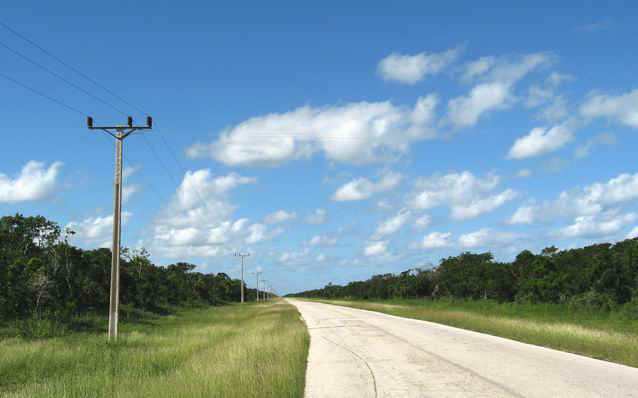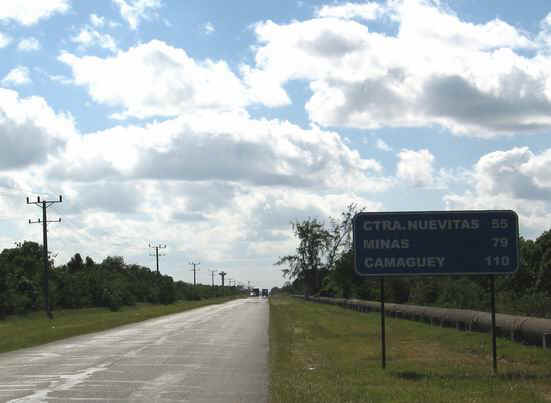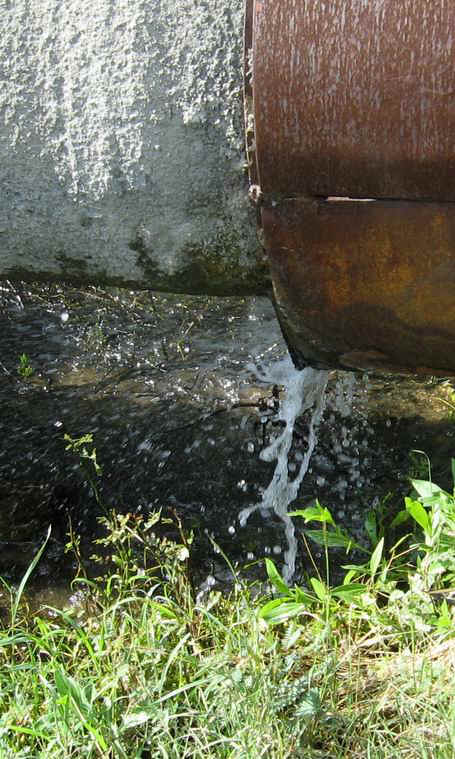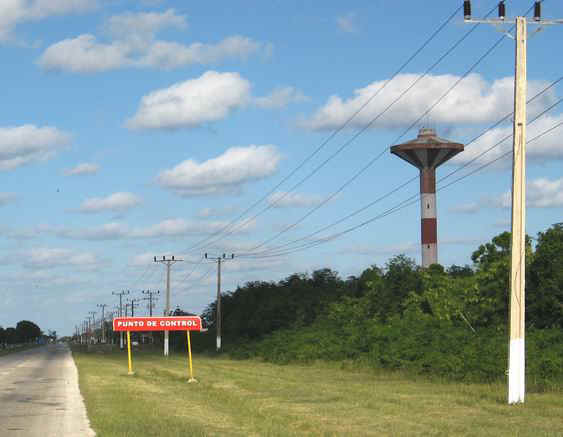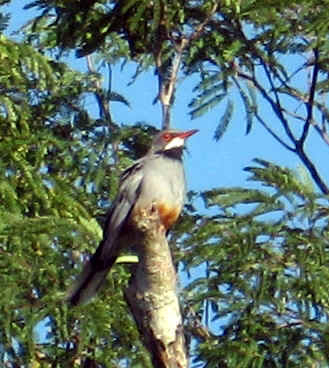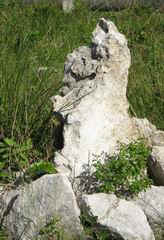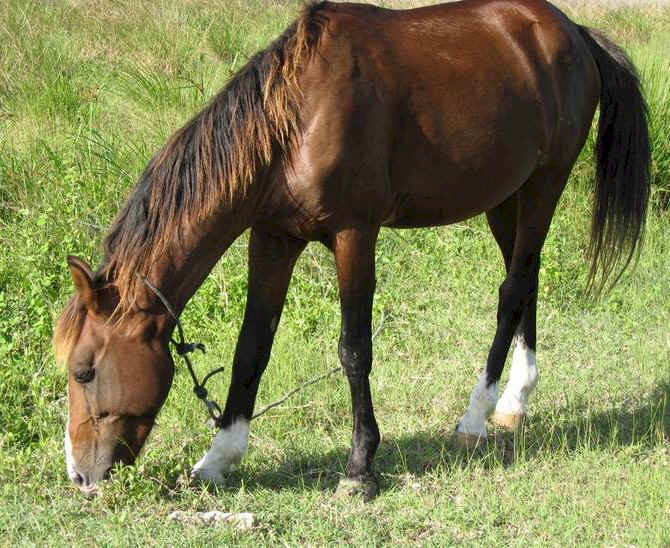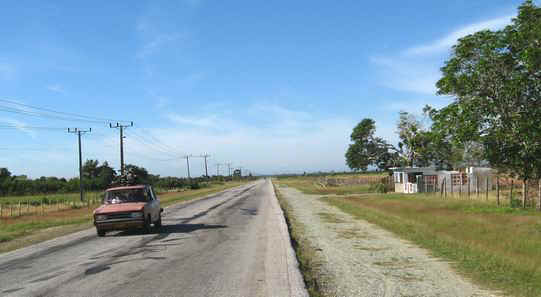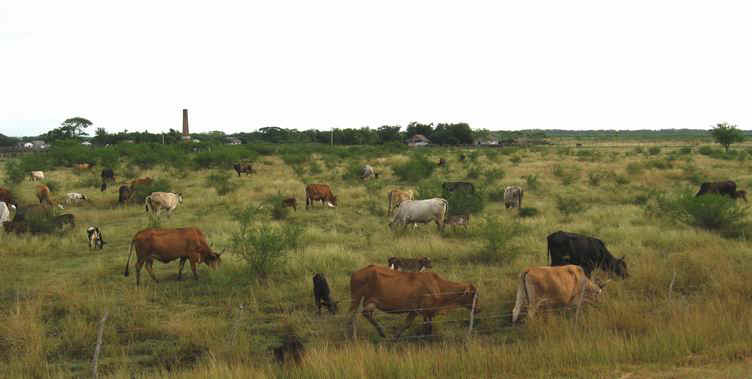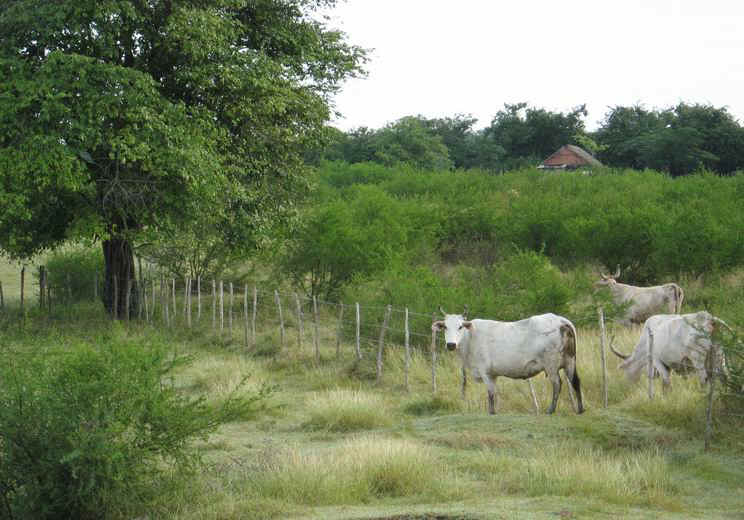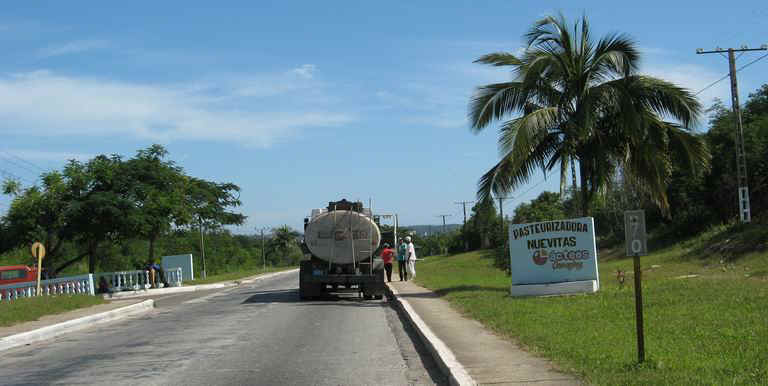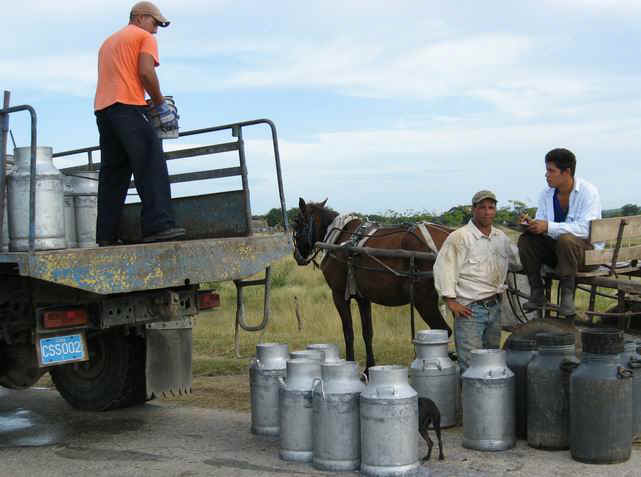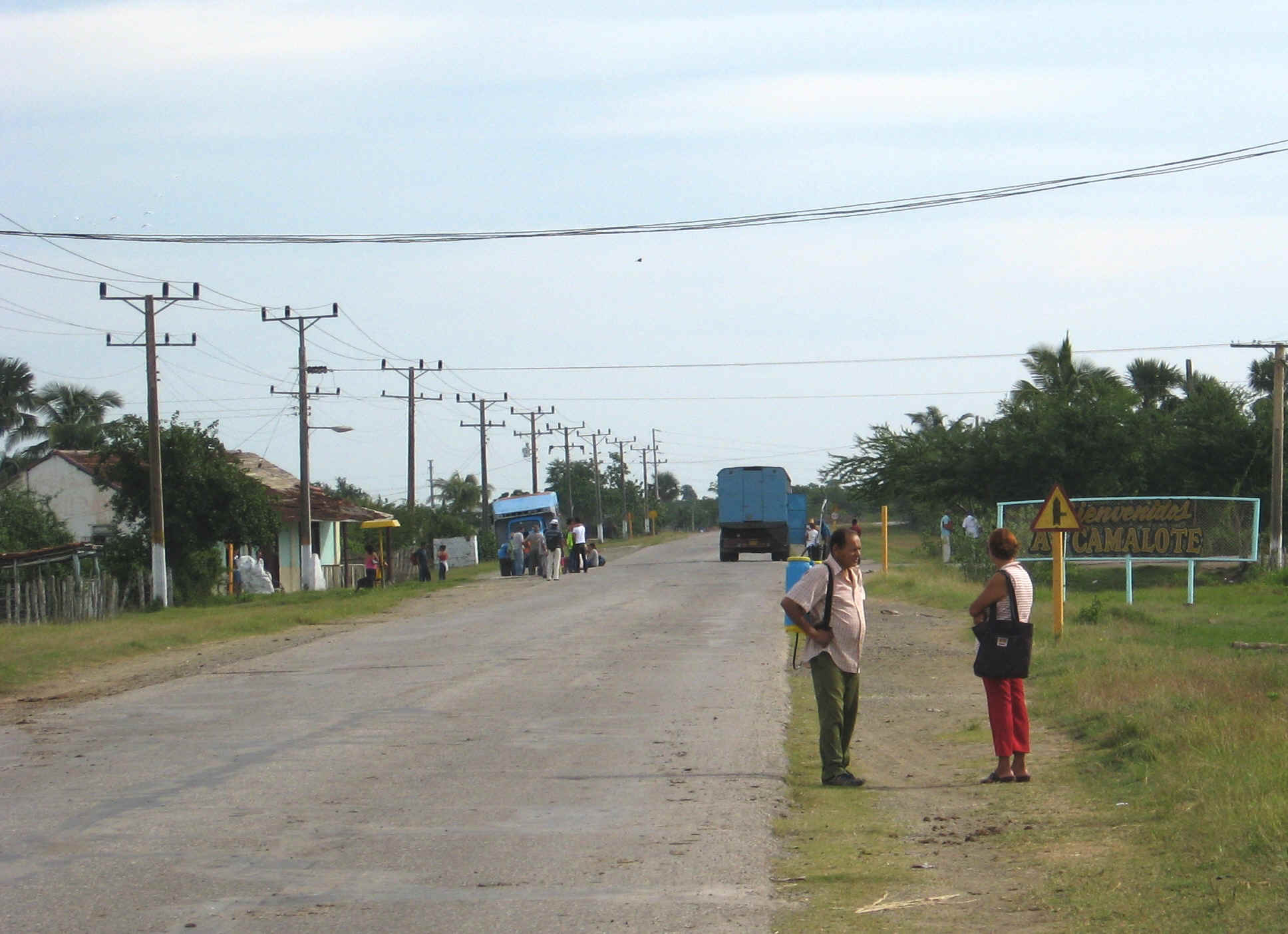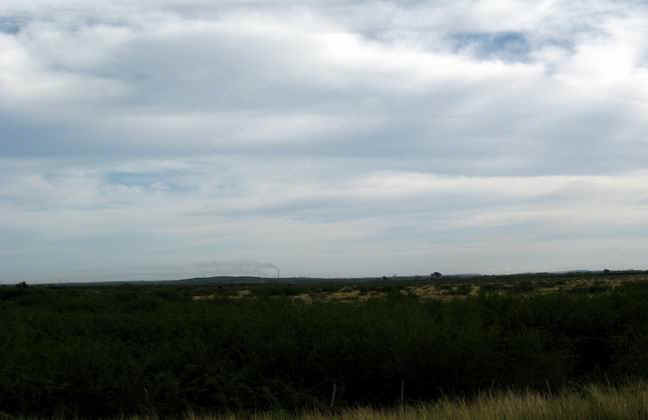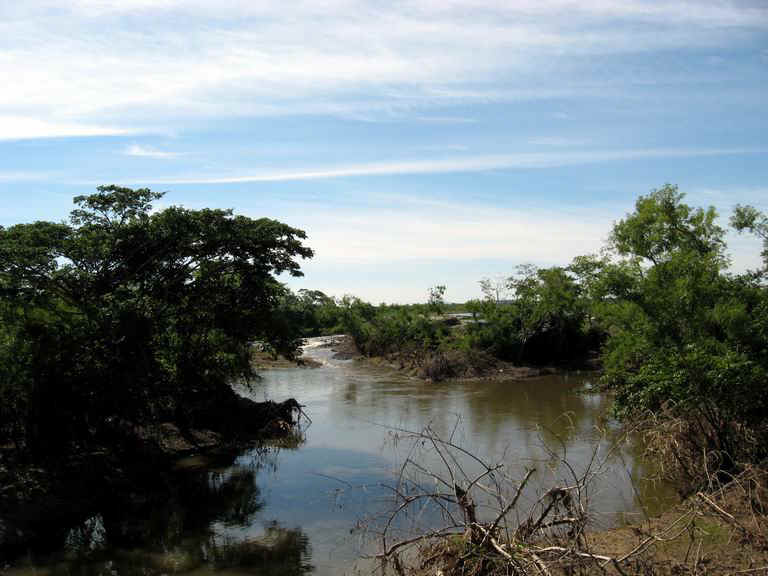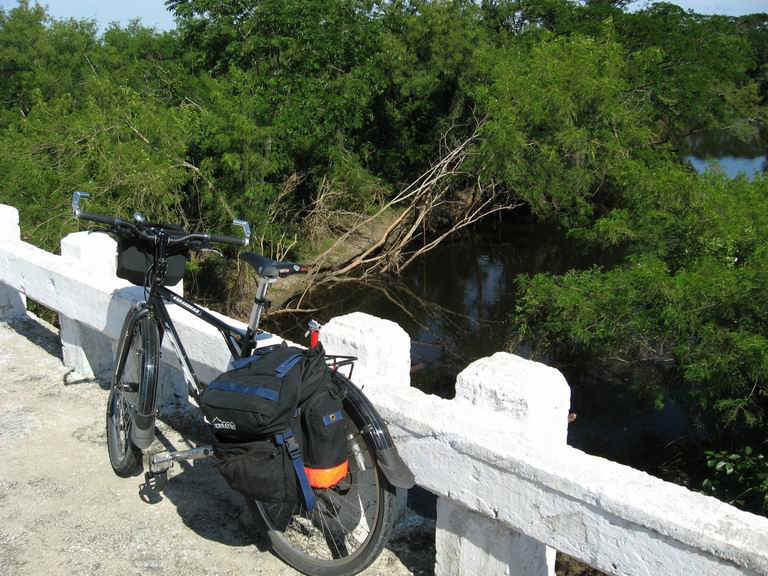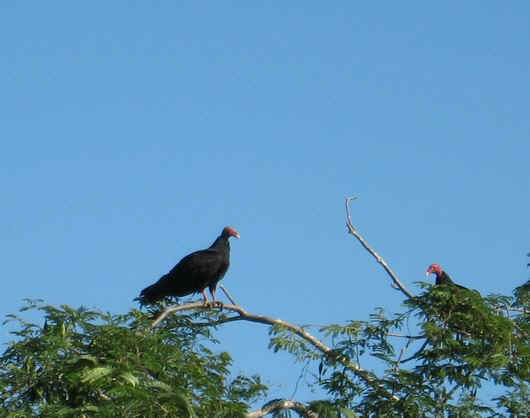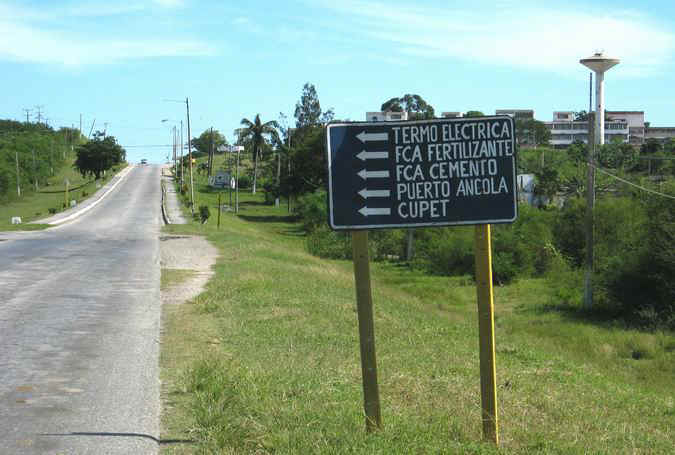Kanu Links
My Cuban Experiment, 2008
The Countryside
between Santa Lucia and Nuevitas
| The trip was an experiment. I needed to find out first-hand
how one would travel in Cuba on a bicycle. The stories I had heard were promising, but
Cuba is a special place and I felt the need to try it myself, and to plan the trip such
that if things didn't work out as planned, there would be no severe penalty. So, I pedaled
from the hotel at the coast to a city about 70km away, stayed overnight and returned the
next day. The country is flat and roads are straight - "boring" you might say. But for a cyclist, that makes life easy.
Distances are great; to get to the next town worthy a touristy visit (Camaguey - about 300,000 inhabitants and a provincial capital), that would be over 100km.
You'll notice the the water main running beside the road. If comes from somewhere inland and carries fresh water to the tourist area at Santa Lucia. It was leaking in some parts (with repair material nearby ready for some future fixes), and that was a boon to me on the return trip: I was out of water and quite parched, unable to buy anything to drink. So I just refilled my bottle at the leak and hoped that the water had been purified at the source already....
There are police checkpoints along the road, like indicated by this sign near the village that was meant to serve a larger tourism project near Santa Lucia but stagnated at a smaller size.
The monotony was relieved occasionally by a bird in the tree, a memorial for someone killed in an accident, or a horse grazing beside the road.
But generally, it looked like this, with farmed country on both sides.
Cows are common, and if you do a bit of search for the "King Ranch", you'll find that some old grudges smolder in this part of the country. Now a tourist centre that offers horse rides etc, it was taken over by the state from its foreign owners about fifty years ago, and its herd of unusual cattle seems to have survived.
Trucks collect the milk...
There are villages in the area but the road did not lead close by. Camelote for instance was about 7km off the highway, but folks from there would wait by the road for a bus or truck to take them to their destination.
All along the road I could see the chimneys of Nuevitas as I circled the large bay and looked across the flat lands.
The road crossed a few rivers, a welcome sight with its trees and promise of a more varied nature.
But generally, John Crow was my steady companion.
Eventually, I reached the City of Nuevitas, and the road sign below tells you a little about what matters in this place: the power plant, the fertilizer and cement plants and its port. What's left out are directions to the sugar factory, but to find it, one would only have to find out where all there huge trucks come from that belch black smoke as they lug their cargo of piled high sacks of sugar even on this Sunday afternoon when I arrive in town.
Click here for a continuation of my story: Looking at Nuevitas.
|
![]()
Home Back to
Erhard's Home Page
Click here to get to Erhard's Cuba2008 page
